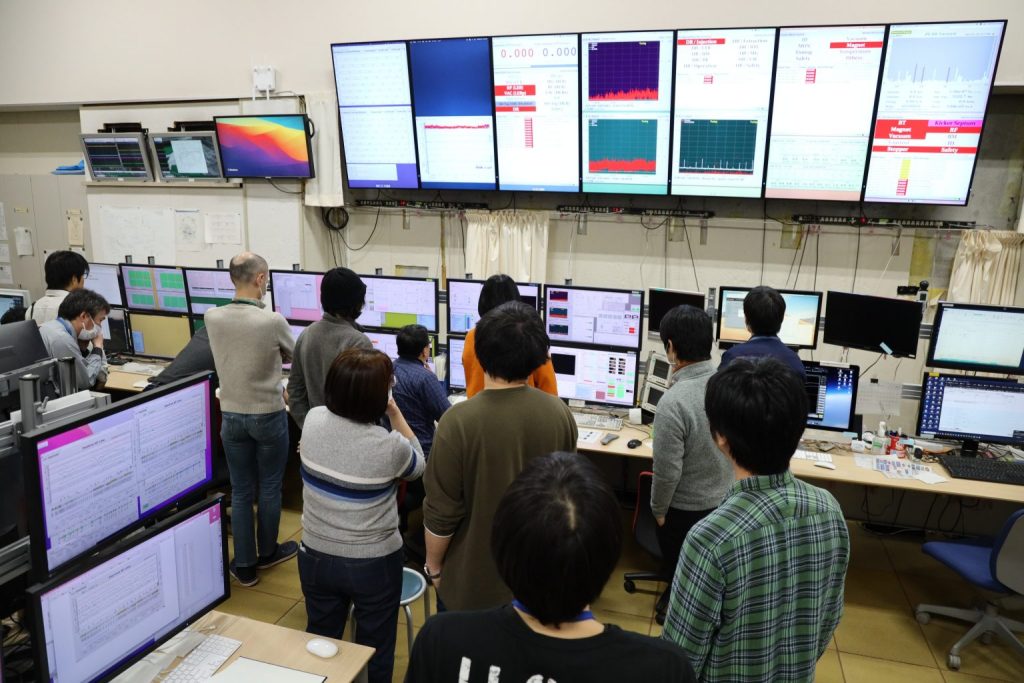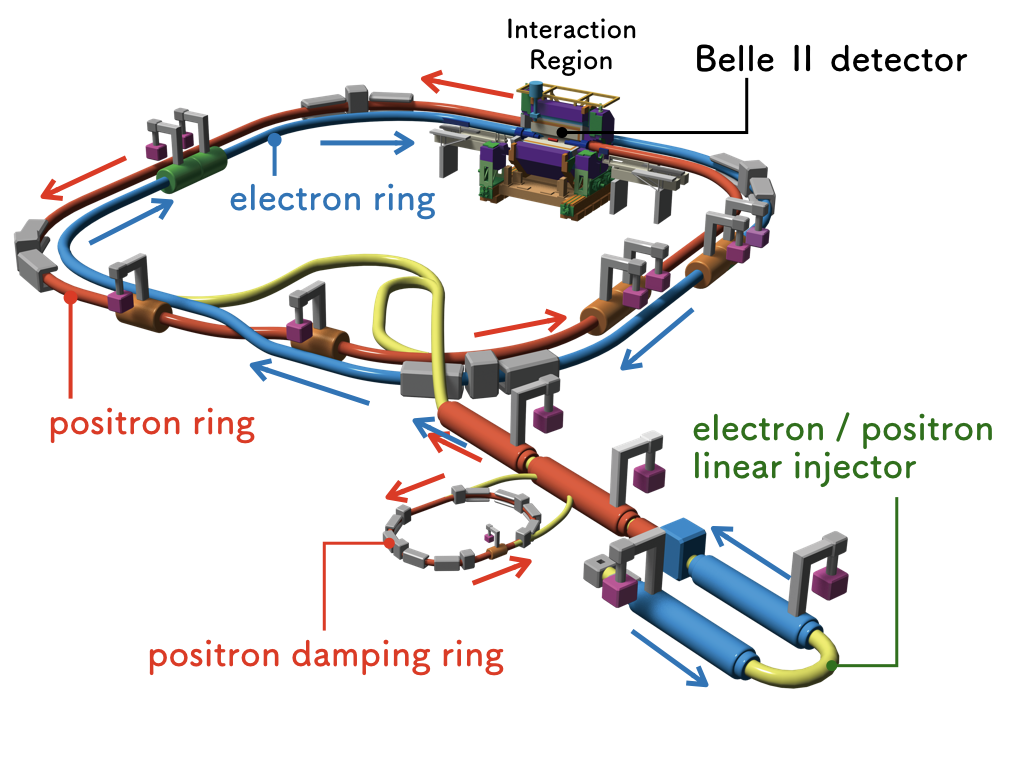
On 29th January 2024, the SuperKEKB accelerator and the Belle II detector restarted operations for the first time in 18 months, following the completion of a number of upgrades. SuperKEKB is Japan’s largest electron-positron collider, situated at the KEK Tsukuba Campus. The Belle II detector is a large particle detector surrounding the collision point of the SuperKEKB accelerator for recording the interactions and decays of particles produced in the collisions.
SuperKEKB is a circular collider with a circumference of about 3 km built 11 meters underground. Beams of electrons and positrons are accelerated to almost the speed of light and collide with each other.SuperKEKB and the Belle II detector form a facility designed to search for new physical phenomena that may hold the key to solving mysteries from the creation of the universe.

The SuperKEKB accelerator started operations to record data for physics analysis in 2019 and achieved the world’s highest luminosity (a measure of the collision performance) in June 2020. The accelerator continued to break luminosity records since then, but to keep on breaking records a shutdown period to allow for upgrades was necessary.
SuperKEKB began its shutdown, lasting about 18 months in total, in June 2022 to allow for the upgrade and maintenance of the accelerator; these updates will allow it to maintain the beam quality even as the beams are focused more strongly. Highlights of the upgrades include installing a “nonlinear collimator” on the positron ring to reduce beam instability, remodeling the electron injector, and installing a pulse solenoid to the linear injector. Of note is that the installation of the “nonlinear collimator” is a world-first – it is expected that this will improve luminosity while suppressing background noise induced by beam.
The accelerator group is committed to providing high-current beams of sufficient quality and stability and achieving unprecedented luminosity. The accelerator will undergo a period of recommissioning to confirm the effectiveness of the upgrades, and establish stable operations allowing data to be recorded for physics analysis, with the goal of continuing to set new luminosity world records in the process.
